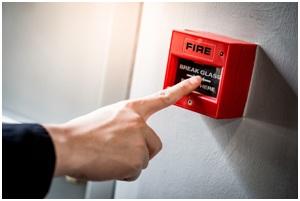In new data released by the UK Home Office on 11 August, statistics show that the vast majority (98%) of confirmed automatic fire alarm incidents are false alarms. The data, which details automatic fire alarms by confirmed type between 2016 and 2021, highlights that 2% of confirmed incidents from automatic fire alarms were a result of an actual fire in 2020/21. This is down from 3% from 2019/2020.
The majority of false alarms (90%) are due to ‘false apparatus’, with 2% deemed as malicious. 6% are a result of ‘good intent’. The overall number of fire incidents from automatic fire alarms in 2020/21 was 129,221 – a decrease of over 6.5% on the previous year.
Of those that were confirmed fires, 1,855 were from dwellings, 740 from ‘other buildings’, 52 from secondary fires, nine from ‘other outdoors’, five from road vehicles and four from chimney fires. Much like previous years, Greater London saw the most confirmed incidents (31,188), making up 24% of the overall number.
Automatic fire alarms are designed to send a signal once a fire is detected via the fire alarm panel straight to an Alarm Receiving Centre (ARC) for the local fire and rescue service to respond to. Some fire and rescue services now also require a confirmed fire before responding, due to the high number of false alarms received, though many do not, such as the London Fire Brigade, who will respond to every alarm unless a false alarm is confirmed beforehand.
Fire and rescue services regularly emphasise the need to reduce false alarms, as fire crews could be attending genuine fires instead. It has suggested several steps to reducing false alarms:
1. Make sure the fire alarm design suits the premises and its use
2. Make sure the alarm system is properly and regularly maintained
3. Investigate false alarms to build in measure to prevent them from reoccurring
4. Introduce a suitable filtering process to safely investigate why the fire alarm went off before calling the fire brigade
5. Consult with suitable professionals for relevant advice








